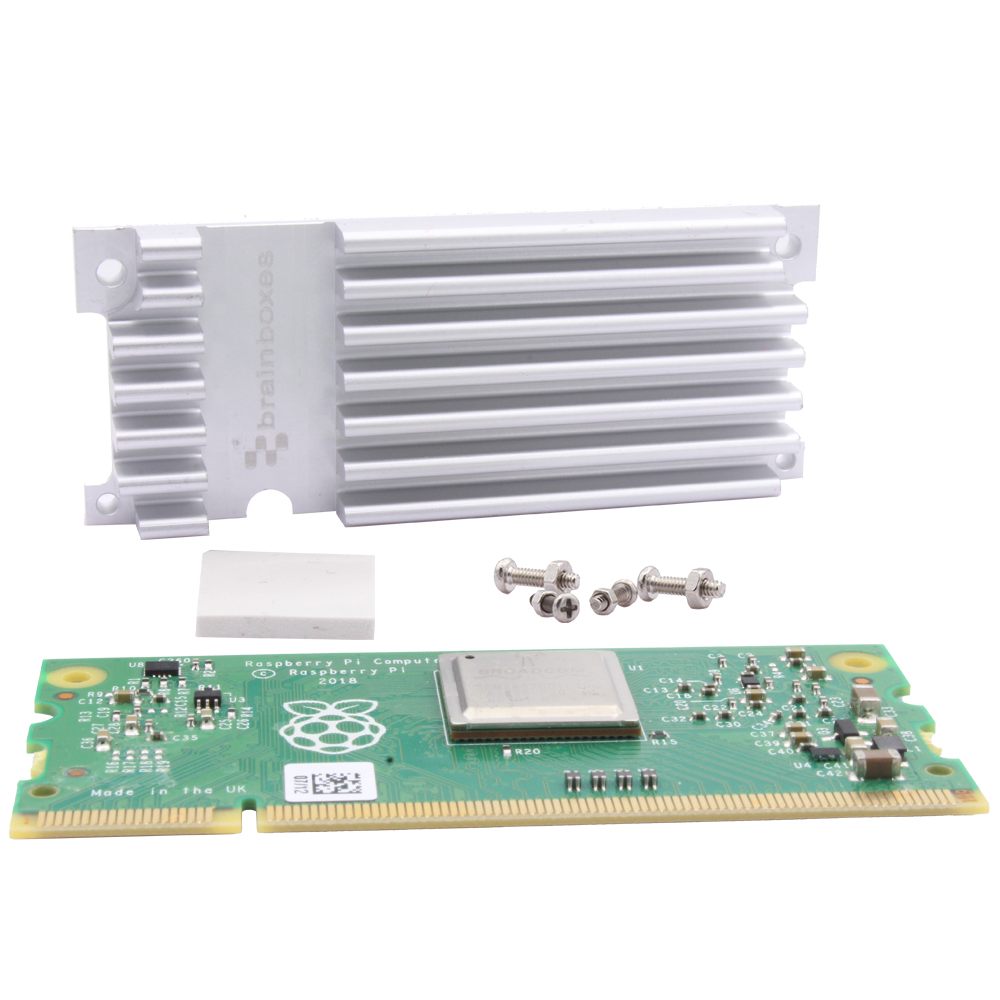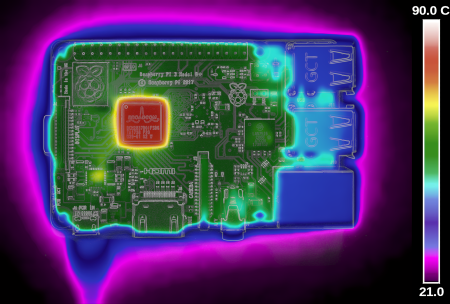
MK-923 – Raspberry Pi Compute Module Heatsink Accessory
In certain situations, the Pi can be pushed beyond its qualified operating temperature range, therefore its long-term performance is not guaranteed. All Brainboxes accessories are available to purchase separately, with no minimum quantity order.
- Compatible with CM 3+, CM3 Lite, CM3 and CM1 (use additional included thermal pad)
- Sits in direct contact with the Raspberry Pi compute module’s integrated processing chip (SoC)
- Includes: 2x M1.6 & 2x M2.0 screws and nuts, spare heat pad, and heatsink
- Used by Brainboxes in the BB-400 and BB-411.
- MK-923-datasheet
A reported issue with Raspberry Pi can be overheating, with a resulting loss of performance, when the board is exposed to high temperatures. The thermal map below shows a Raspberry Pi 3+ processor reaching towards 90oC. In some tests, the Pi’s SoC has been shown to exceed 100oC. In certain situations, the Pi can be pushed beyond its qualified operating temperature range, therefore its long-term performance is not guaranteed.

RASPBERRY PI 3+ THERMAL MAP SOURCE: GARETH HALFACREE FROM BRADFORD, UK [CC BY-SA (HTTPS://CREATIVECOMMONS.ORG/LICENSES/BY-SA/2.0)]
Prototyping on a Pi? Download our free e-book!
Why is Raspberry Pi so popular with engineers?
-
BB-400
$592.52 Add to cart

